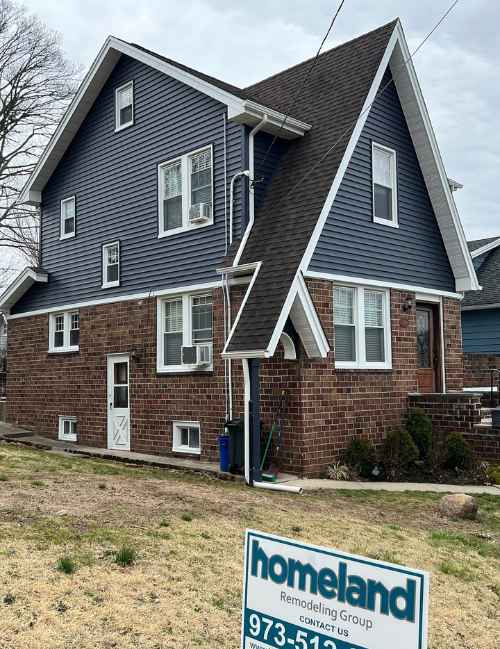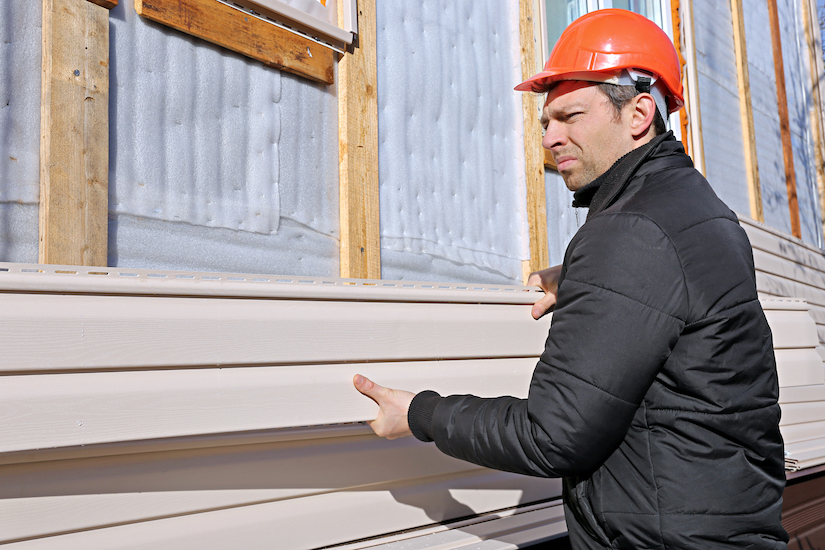The Vital Overview to the Different Kinds of Siding and Their Distinct Benefits
In the world of home enhancement, selecting the appropriate exterior siding is a vital choice that impacts both aesthetic charm and functional efficiency. The selection of materials offered, such as wood, plastic, fiber block, concrete, and steel, each deal one-of-a-kind benefits that satisfy different requirements and preferences. Recognizing these differences can significantly improve the durability and worth of a home - morris siding contractor. Nonetheless, with many options to consider, which exterior siding material genuinely stands out for your particular project? Checking out these selections can cause informed choices that align with both style and usefulness.
Timber Exterior Siding
Timber house siding, a popular option for household exteriors, supplies a timeless visual that combines natural elegance with structural integrity. This house siding material is readily available in different styles, including clapboard, tiles, and board-and-batten, allowing house owners to customize their appearance to match their style preferences. Timber siding is typically crafted from durable types such as cedar, redwood, or yearn, which are recognized for their strength and ability to stand up to environmental stressors.
One of the main advantages of wood home siding is its excellent insulation homes, which can add to energy efficiency and reduced home heating expenses. In addition, timber exterior siding is biodegradable, making it an eco-friendly choice when sourced sustainably. Normal upkeep, including paint or discoloration, can prolong its life expectancy and enhance its appearance, enabling house owners to maintain the natural charm of the timber.
However, potential downsides include sensitivity to bugs, rot, and weather condition damages, necessitating sufficient therapy and maintenance - morris siding contractor. In spite of these problems, when effectively taken care of, wood siding can give a durable and stunning option that improves the personality of a home while providing a warm, welcoming environment

Vinyl Siding
Plastic exterior siding has become a leading option for home owners looking for a low-maintenance exterior option that incorporates longevity and affordability. This functional product is crafted from polyvinyl chloride (PVC), making it resistant to different weather, including dampness and UV rays. Consequently, vinyl home siding does not warp, rot, or discolor, making sure durable visual appeal.
Among the main advantages of plastic house siding is its comprehensive variety of styles and colors, allowing property owners to attain the preferred try to find their building without the need for constant repainting. In addition, plastic siding is very easy to install, which can significantly decrease labor prices throughout building or renovation tasks.
Plastic house siding also adds to power performance. Many alternatives feature insulation backing, which improves thermal efficiency, aiding to keep comfortable indoor temperature levels and possibly reducing power bills. Furthermore, its smooth surface promotes easy cleaning, requiring only regular washing with a garden tube to get rid of dust and debris.
Fiber Concrete Siding
Fiber cement home siding has acquired grip among home owners and home builders alike because of its impressive combination of resilience and visual versatility. Composed of a mixture of concrete, cellulose, and sand fibers, this siding alternative is engineered to withstand extreme weather, consisting of high winds, heavy rainfall, and temperature level changes, making it a lasting choice for domestic exteriors.

One of the main benefits of fiber concrete house siding is its resistance to bugs, such as termites, and its non-combustible nature, offering enhanced fire safety and security. morris siding contractor. In addition, it is available in a vast selection of colors, textures, and styles, allowing property owners to attain their preferred visual without giving up performance
One more benefit is its reduced maintenance needs; fiber cement house siding usually requires painting or staining every 5-10 years, which is less frequent than other materials. Its longevity contributes to a reduced general expense of ownership, as it reduces the demand for regular repairs or substitutes.
Inevitably, fiber cement siding represents an excellent financial investment for those looking for a resilient, appealing, and flexible exterior alternative, integrating both kind and feature to improve the home's aesthetic appeal.
Metal Exterior Siding
The attraction of metal siding depends on its robust longevity and contemporary visual appeal, making it a favored option for modern design. Offered in products such as aluminum and steel, metal house siding supplies a series of surfaces and shades, allowing home owners informative post to attain an individualized appearance that complements their design vision.

Energy efficiency is one more considerable benefit, as many metal exterior siding items are designed with insulation choices that assist manage indoor temperature levels. This can result in minimized power prices with time. Additionally, steel home siding is commonly recyclable, making it an eco-friendly selection for sustainability-minded property owners.
The installment process for steel home siding can be reasonably simple, causing a quicker turnaround time for building tasks. Overall, metal house siding combines capability and style, making it a practical alternative for those looking for a long-lasting and aesthetically attractive outside surface.
Block and Stone Exterior Siding
Brick and rock home siding stands out as a timeless selection that boosts the aesthetic appeal of any type of home. Understood for their durability and reduced maintenance, these products give an outstanding return on financial investment while boosting the building's visual allure. Offered in numerous colors, appearances, and patterns, block and rock can be customized to suit diverse architectural styles, from typical to modern-day.
Among the primary Get More Information advantages of brick and rock siding is their power effectiveness. Both products possess all-natural protecting properties that aid regulate indoor temperatures, potentially reducing cooling and heating expenses. In addition, they use exceptional fire resistance contrasted to various other siding alternatives, adding to enhanced safety and security.
An additional benefit is their durability. Block and rock can last for decades, frequently needing minimal upkeep past periodic cleansing. Unlike wood siding, they are unsusceptible bugs and rot, making certain a resilient exterior that endures the components.
Final Thought
In recap, the selection of home siding considerably influences a home's aesthetic charm, power efficiency, and upkeep needs. Each sort of house siding-- whether wood, vinyl, fiber metal, block, or click here for more cement and rock-- provides one-of-a-kind benefits customized to different house owner preferences and environmental problems. Recognizing these options allows educated decisions that enhance both the toughness and aesthetic appeal of property exteriors. Inevitably, choosing the best siding is important for achieving an equilibrium in between capability and design in residential style.
One of the key benefits of timber siding is its superb insulation properties, which can add to energy performance and reduced home heating prices. In addition, timber exterior siding is naturally degradable, making it an eco friendly choice when sourced sustainably.One of the key advantages of metal exterior siding is its resistance to different ecological variables.Energy efficiency is one more considerable advantage, as several steel home siding items are created with insulation options that assist control interior temperatures. Each kind of house siding-- whether timber, plastic, fiber concrete, steel, or brick and stone-- provides unique advantages customized to different house owner choices and environmental conditions.